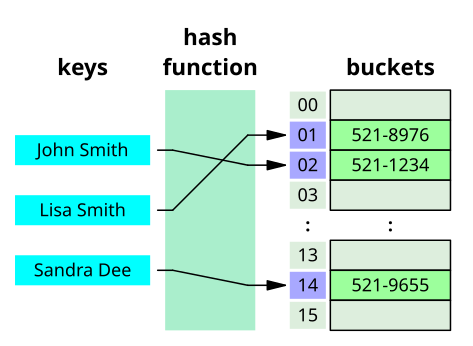A
home network or
home area network (
HAN) is a type of
local area network that develops from the need to facilitate communication and interoperability among digital devices present inside or within the close vicinity of a
home. Devices capable of participating in this network–
smart devices such as network printers and handheld mobile computers–often gain enhanced
emergent capabilities through their ability to interact. These additional capabilities can then be used to increase the
quality of life inside the home in a variety of ways, such as automation of repetitious tasks, increased personal productivity, enhanced home security, and easier access to entertainment
One of the main factors that has historically led to the establishment of a HAN is the out-of-box inability to share residential
Internet access among all internet capable devices in the home. Due to the effect of
IPv4 address exhaustion, most
Internet Service Providers provide only one
WAN-facing
IP address for each residential subscription. Therefore most homes require some sort of device that acts as a liaison capable of
network address translation (NAT) of packets travelling across the WAN-HAN boundary. Even while the router's role can be performed by any commodity
Personal Computer with an array of
Network Interface Cards, most new HAN administrators still choose to utilize a particular class of small, passively-cooled, table-top devices which also provide the
wireless access point functionality necessary to access the HAN via
Wi-Fi–a virtual necessity for the multitude of wireless mobile-optimized devices focused around internet content consumption. The kinds of routers marketed towards HAN administrators attempt to absorb as many duties as possible from other network infrastructure devices while at the same time striving to make any configuration as automated, user friendly, and "plug-and-play" as possible.
Recently however ISPs have starting installing Gateway/Router/Wi-Fi combination devices for new customers which reduces the required steps needed to simply setting the password.
Home networks may use wired or wireless technologies. Wired systems typically use shielded or unshielded
twisted pair cabling, such as any of the
Category 3 (CAT3) through
Category 6 (CAT6) classes, but may also be implemented with coaxial cable, or over the existing electrical power wiring within homes.
One of the most common ways of creating a home network is by using
wireless radio signal technology; the 802.11 network as certified by the
IEEE. Most products that are wireless-capable operate at a frequency of 2.4
GHz under 802.11b and 802.11g or 5
GHz under 802.11a. Some home networking devices operate in both radio-band signals and fall within the standard 802.11n.
A wireless network can be used for communication between many electronic devices, to connect to the Internet or to wired networks that use Ethernet technology.
Wi-Fi is a marketing and compliance certification for IEEE 802.11 technologies.
[1] The
WiFi Alliance has tested compliant products certifies them for interoperability.
As an alternative to wireless networking, the existing
home wiring (coax in North America, telephone wiring in multi dwelling units (MDU) and power-line in Europe and USA) can be used as a network medium. With the installation of a home networking device, the network can be accessed by simply plugging the
Computer into a wall socket.
The
ITU-T G.hn and
IEEE Powerline standard, which provide high-speed (up to 1 Gbit/s) local area networking over existing home wiring, are examples of home networking technology designed specifically for IPTV delivery. Recently, the IEEE passed proposal
P1901 which grounded a standard within the Market for wireline products produced and sold by companies that are part of the
HomePlug Alliance.
[2] The IEEE is continuously working to push for P1901 to be completely recognized worldwide as the sole standard for all future products that are produced for Home Networking.
